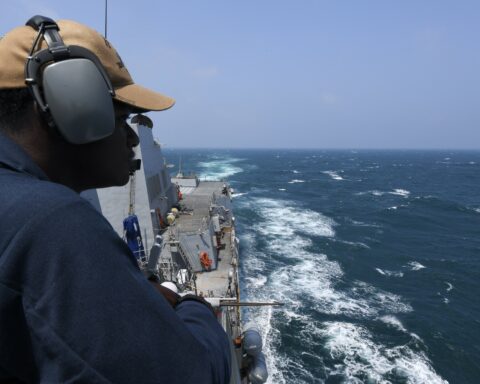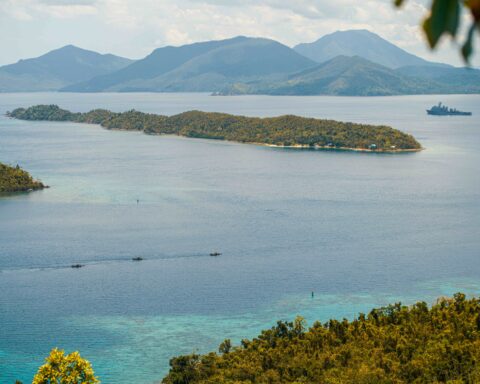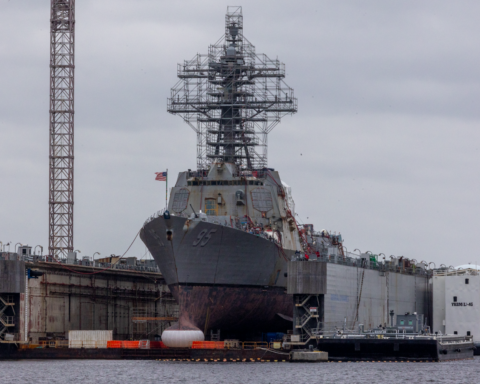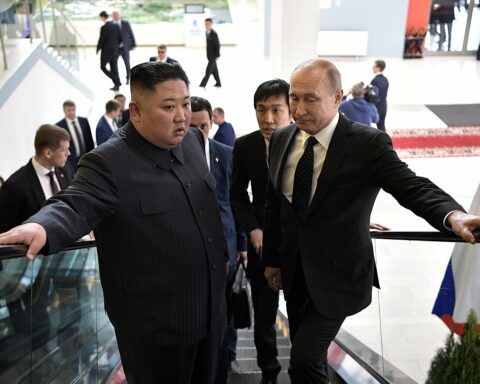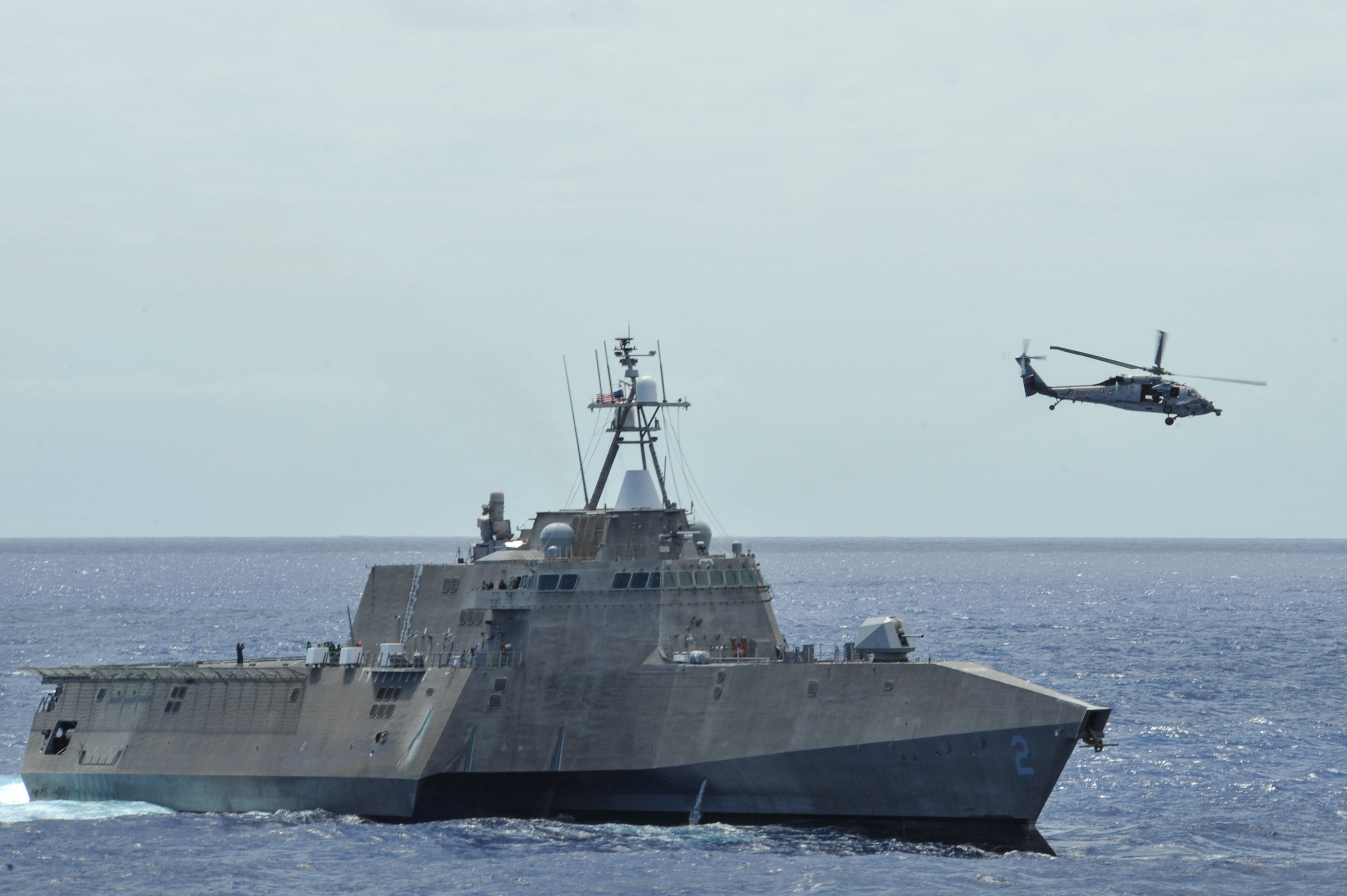
WASHINGTON, D.C. — The Program Executive Officer for Littoral Combat Ships (LCS) hopes to send a version of the anti-submarine warfare (ASW) mission package out to sea before officially reaching initial operational capability, as earlier testing showed “phenomenal” capability compared to current systems.
The mission package as it currently stands is too heavy, PEO Rear Adm. Brian Antonio told USNI News in an interview at the Washington Navy Yard, and changes will be made to lighten it during the engineering and manufacturing development phase.
However, PEO LCS took an advanced development model out to sea on USS Freedom (LCS-1) last year, and “the results are classified, but what I can tell you is that the performance of the system was phenomenal,” Antonio said.
“It’s actually propelled us to look at ways to try to field that system at sea as soon as possible, even in its current state as an advanced development model. … We’re looking at opportunities in 2016 to be able to get that out to sea, call it a deployment and actually do more real-world exercises with that system. So being able to get it out in 2014 and show how the system works and kind of get the fleet excited about it was exciting for us.”
Antonio added that the mission package would deploy from San Diego, and “my goal would be to try to deploy it as far away, as far as we can, and we could even maybe prove out some other [concepts of operation] like changing mission packages outside of homeport.”
The exact details of the deployment would depend on funding from the surface warfare directorate at the Pentagon and on fleet schedules, but Antonio said the deployment of the anti-submarine warfare advanced development model would help familiarize the fleet with the mission package capabilities ahead of mass production and fielding.
The anti-submarine warfare mission package consists of the same Multi-Function Towed Array submarine-detection sonar already used in the fleet, a variable-depth sonar and a towed lightweight torpedo decoy. If an enemy submarine were detected and needed to be attacked, the mission package also includes the MH-60S helicopter with Mk-54 airdropped lightweight torpedoes.
Antonio said sailors are already familiar with the towed array sonar in the mission package, so “what we were most interested in was the characterization of the sonar itself,” which he said last year’s testing proved very impressive.
In the mean time, the program office has proposals out for engineering development models, which would take the current instantiation of the mission package and turn it into a production-representative product. Antonio said the process would primarily serve to lighten the systems and make them more conducive to shipboard operations.
“The current configuration is too heavy, we need to make it lighter-weight,” he said.
“We believe there are better ways for handling gear and the configuration in the ship; we were able to open the doors on the Freedom, but there were some speed restrictions because of the configuration of the doors and that kind of thing, so we want to work through all that.”
A deployment with the advanced development model would not bring the mission package any closer to declaring initial operational capability (IOC), which can only be done with the production-representative model. Antonio expects to get through engineering development and send the upgraded model into testing at sea in 2017 or 2018, depending on ship availability.


